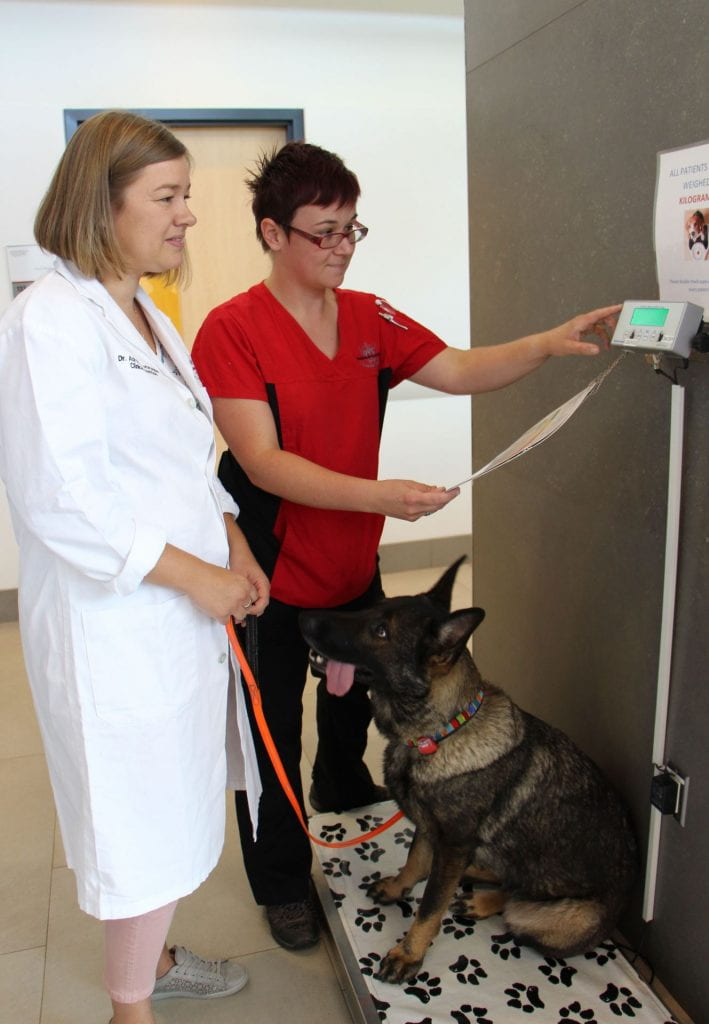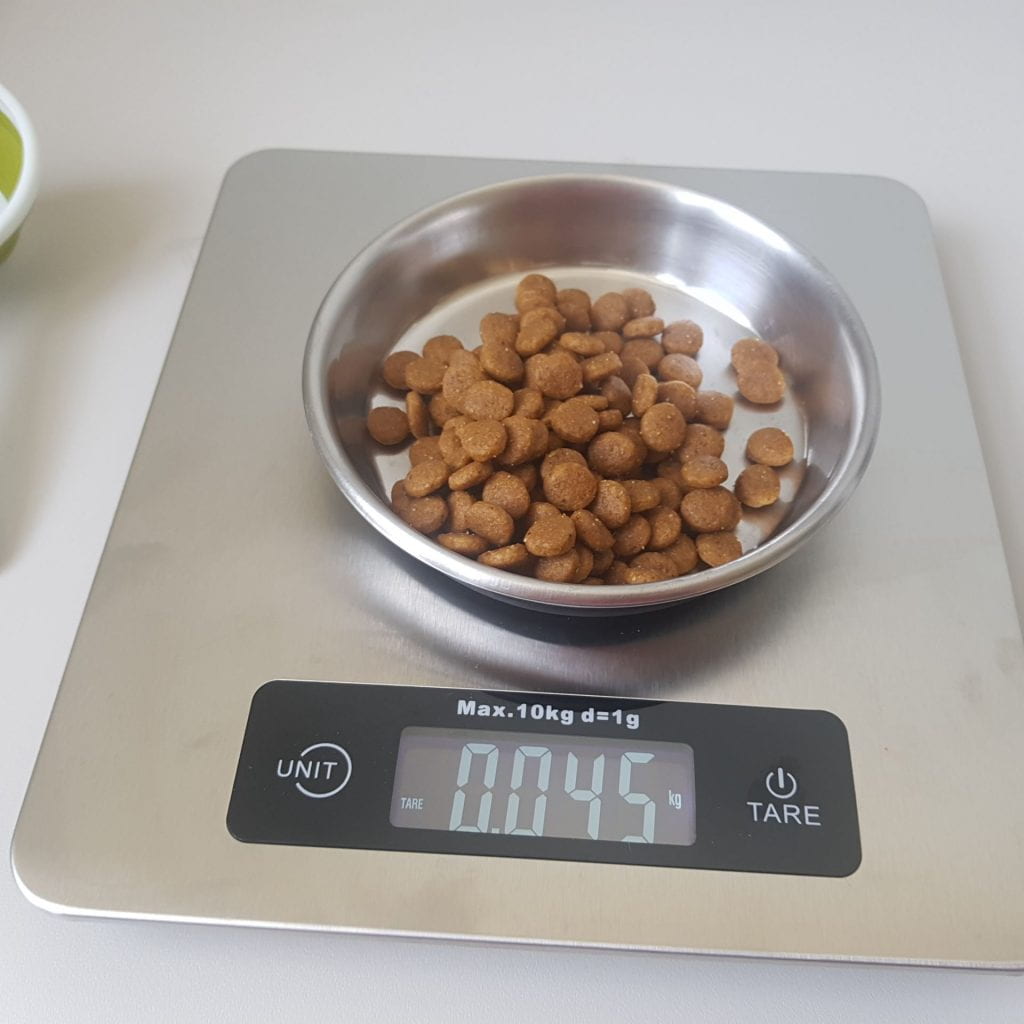With National Pet Obesity Awareness day coming up on October 14, the OVC Pet Nutrition team thought it was a good time to bring some attention to the #banthecup movement.
What do we mean by this? Well, many veterinarians, veterinary nutritionists, and pet nutritionists, are encouraging pet parents to move away from using a measuring cup to measure their pet’s food, to the use of a kitchen gram scale.

This may not make a lot of sense to pet owners and/or veterinary team members. Why is this happening? Aren’t measuring cups a good thing?
Although there are worse things that pet owners can use to measure their pet’s food such as their hands or the pet’s bowl (or they may free-fed and not measure at all), there have been two published papers highlighting the inaccuracies of measuring cups.
The first paper was published in 2010 by Dr. Alex German and his colleagues. In this study, the authors found that the accuracy of various portion sizes of dry dog and cat food measured by use of measuring cups ranged from an underestimation of 18%, to an overestimation of over 80%! The participants of this study involved the researchers themselves and pet nutrition industry associates.
The inaccuracy of measuring cups was further supported by a 2018 paper by OVC’s Dr. Jason Coe and colleagues (including OVC Pet Nutrition’s Alex Rankovic, PhD student, and Dr. Jackie Parr, adjunct faculty). For this second study, 100 dog owners were assigned one of the following three measuring devices: a one-cup dry-food measuring cup, a two-cup graduated liquid measuring cup, or a two-cup commercial food scoop. With their assigned device, pet owners were asked to measure ¼, ½ and 1 cup of dry dog food.
The results of this study were even more astonishing! Participant’s inaccuracy ranged from a 47.83% underestimation to a 152.17% overestimation across all measuring devices and volumes. Additionally, the authors noted that inaccuracy was greater when measuring a smaller volume of food (¼ cup compared with 1 cup).

Ok, so what’s the big deal?
The tendency to overestimate the volume of food measured with a measuring cup (or scoop), suggests that many pets may be consistently overfed, therefore they are receiving excess calories daily. These pets are at a greater risk of gaining weight and potentially becoming obese. Overweight and obese pets have a higher risk of developing numerous diseases and conditions, including osteoarthritis. In addition, there has been research showing that overweight dogs live on average two years less than those that are lean.
Special attention should be paid to small dogs and cats, as the second study revealed that the greatest inaccuracies in measuring occurred when participants were asked to measure the smallest volume (¼ cup) of dog food.
In contrast, a consistent underestimation of food may also be harmful as it may put pets at risk for severe caloric restriction, leading to nutritional deficiencies.
So if measuring cups aren’t the answer, what is? Gram scales!

Pet owners should be encouraged to measure their pet’s food by weight, not by volume, through the use of an electronic gram scale. Gram scales provide accurate measurements and are especially helpful for measuring smaller quantities of food.
Although the use of gram scales may not seem appealing to many pet owners initially, the second study by Dr. Jason Coe found that after completing the measuring activity, most pet owners said they would be very likely to use a gram scale for measuring their dog’s food in the future!
Dr. Jason Coe and colleagues suggest that veterinary clinics should consider recommending a gram scale to every client, but specifically for those in a weight loss program. Additionally, clinics can encourage their clients to use a gram scale by demonstrating the accuracy and ease of it. These demonstrations can be one-on-one demonstrations with the client, or they can simply be setting up a little measuring activity for clients to try while they wait!
Still unsure? Give the measuring activity a try!
The weight (in grams) of one cup of your pet’s food should be available on the bag, or the company’s website. Try measuring 1 cup, ½ and ¼ cup and see how accurate (or inaccurate) you are! You’ll also experience how easy and uncomplicated using a gram scale is!
By: Alex Rankovic, PhD Candidate


